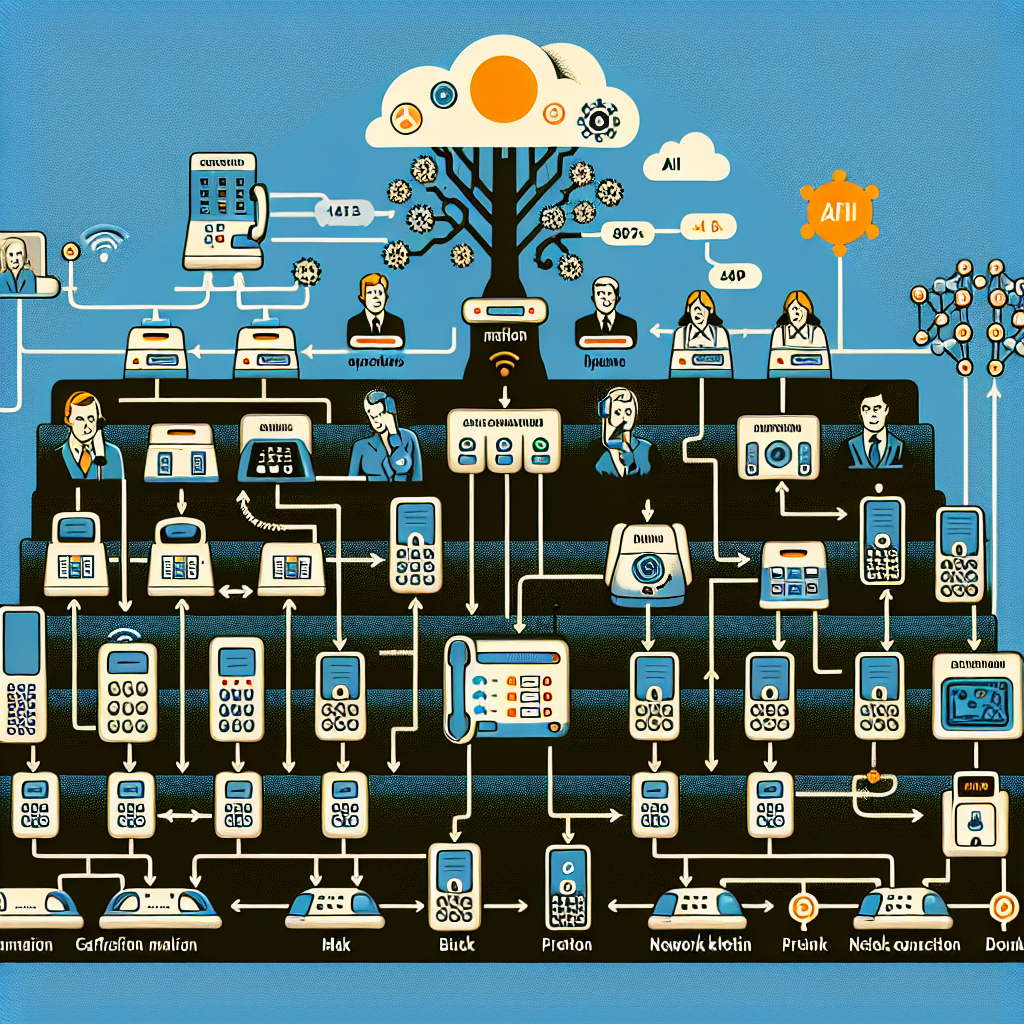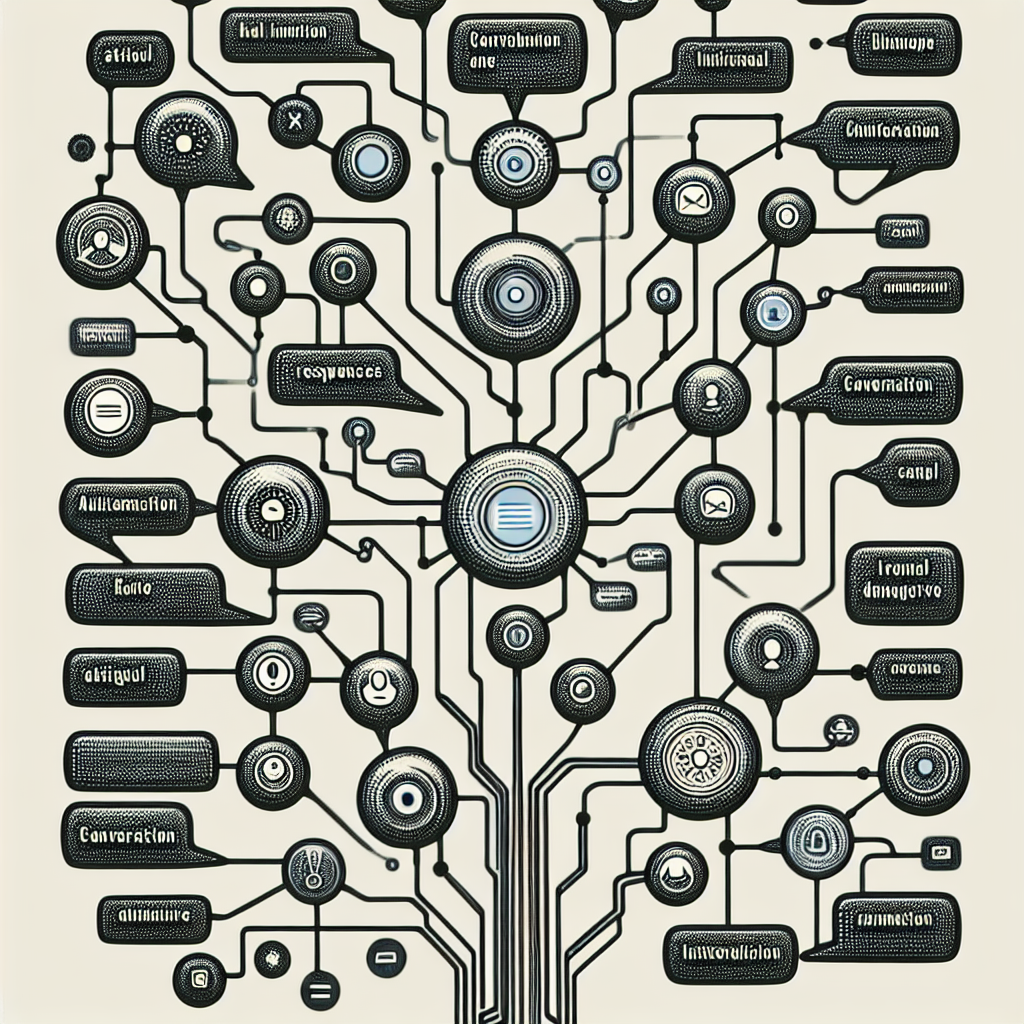
Welcome to the world of AI-enhanced Phone Trees, a pivotal technology that's revolutionizing the modern call handling and client servicing industries. Since their inception, phone trees, also known as Interactive Voice Response (IVR) systems, have been an integral part of businesses' communication frameworks, helping companies effectively manage their incoming calls. However, traditional phone trees have remained static and infamous for delivering a sub-par user experience. Today, AI technologies are being seamlessly integrated into phone trees to ensure improved navigation, better automation, and a profound level of efficiency in managing calls.

The emerging heartbeat of this transformative process is Artificial Intelligence (AI). AI-powered platforms use natural language processing and machine learning algorithms to understand customer needs better. These systems facilitate more contextual and intelligent conversations than their traditional counterparts, creating a more personable and efficient interaction platform. Machine learning, a cornerstone technology in AI integration, enables the system to learn from previous call data and continually enhance the caller's experience by anticipating their needs and personalizing responses.
These AI-powered phone trees can also discern when human intervention is necessary and promptly route the caller to a live agent, thus avoiding caller frustration and significantly improving customer satisfaction metrics. This integration of AI into phone trees, therefore, represents a significant leap toward superior customer experiences, making it a must-explore avenue for businesses striving for a paradigm shift in their customer interaction strategy. In the coming sections, we delve into more details about how AI is playing a critical role in optimizing phone trees and the significant benefits it ushers in for both businesses and customers.
The advent of Artificial Intelligence (AI) has revolutionized the contact center industry, with the role of AI in phone tree optimization being exceptionally transformative. AI-based phone trees, or interactive voice response (IVR) systems, simplify the call routing process, delivering a vastly improved experience for callers.
AI-powered IVR systems are capable of understanding and responding to natural language commands, making the navigation through phone trees far more manageable and intuitive. Unlike traditional IVR systems that reply with fixed, pre-recorded phrases, AI-driven systems can intelligently interpret voice commands and route the calls based on complex caller instructions. The ability of AI to interact with the caller, just like a human operator, ensures an exceptional level of personalization in customer service.
Beyond understanding and responding to voice commands, AI can also leverage historic caller data for predictive routing. An AI system can analyze previous interactions, call reasons, caller preferences, and other relevant factors to guess the caller's requirement before they voice it. By doing so, incoming calls can be effectively routed to the most suitable agent or department, thereby reducing the call handling times and boosting customer satisfaction.
Another major advantage is that AI can adapt to changing caller behavior. As AI systems learn over time, they can recognize patterns and trends in caller behavior, continually updating and refining the phone tree's logic. Consequently, the phone tree becomes more efficient and accurate in routing calls, providing a constantly improving service to the callers.
In conclusion, the integration of AI in phone tree optimization is revolutionizing the call routing process by making it more intelligent, personalized, and adaptable. As AI continues to evolve, the scope for further optimization in this field remains enormous. By deploying AI-based IVR systems, businesses and contact centers can provide an enhanced caller experience and considerably improve their operational efficiency.
With the rapid progression of technology, businesses are increasingly turning to Artificial Intelligence (AI) to enhance their services. One such application of AI is in phone tree optimization, which significantly improves the user experience for callers. But what are the particular benefits of AI phone trees? Let's examine the reduced operational costs, the impact on customer satisfaction, and the increased scalability provided by this innovative technology.

Cost-effectiveness is a prime advantage of implementing AI phone trees. Automated systems, using natural language processing, can handle a large volume of calls concurrently. This reduces the need for extensive human staffing, thereby, lowering operational costs. For an in-depth look at AI and cost savings, refer to this insightful Forbes article.
Besides, an optimized, intelligent phone tree acknowledges the customer's need for efficient service. Unlike traditional phone trees, AI models can understand and respond to complex customer requests, improving issue resolution times and overall customer satisfaction. A study by UJET brings to the fore the connection between automation and customer satisfaction rates.
Lastly, AI phone trees are highly scalable. They can handle a surge in call volumes, modify responses based on learning from customer interactions, and integrate transparently with other business systems. Thus, AI phone trees provide a sustainable growth path in businesses' customer service operations. Read more on AI scalability from this detailed Forbes report.
In conclusion, AI-powered phone tree optimization brings considerable benefits to businesses. It effectively blends cost efficiency, satisfaction's boost, and scalability, proving it to be a pivotal tool in enhancing customer service strategy in the digital age.
As artificial intelligence (AI) continues to robustly penetrate various sectors, its significance in optimizing phone tree systems shouldn't be underestimated. Multiple industries have begun practicing AI in phone tree optimization, realizing notable advantages and efficiency improvements.
In 2019, the communication firm, Vodafone New Zealand, launched an AI digital assistant - TOBi. TOBi was developed to simplify the customer service experience, providing immediate, accurate responses and assisting users in navigating the phone tree system. A few months into implementation, Vodafone saw a 60% drop in transferred calls, indicating the effectiveness of AI phone tree navigation in reducing unnecessary transfers and improving customer satisfaction.
Another notable case is The National Institutes of Health (NIH). In 2020, they introduced the use of AI to reduce callers' wait time. The AI software predicts the caller's reason for the call based on the first few seconds of interaction, seamlessly navigating them through the phone tree to the appropriate department, thus reducing call durations and increasing efficiency.
Delta Airlines have also reaped the benefits of AI. In 2018, they introduced an AI-driven Interactive Voice Response (IVR) system to provide personalized customer interactions. The system uses past customer activity and AI algorithms to predict why a customer might be calling. The results have been astounding, with reduced wait times, improved customer experiences, and an increase in first-call resolutions.
To conclude, real-world applications of AI in phone tree systems demonstrate how it is fundamentally changing the way businesses handle customer interactions. The adoption of intelligent systems delivers impressive efficiency gains and significantly improves customer satisfaction. With the success and promise seen in these early adoption cases, it’s safe to predict more widespread usage of AI in phone tree optimization in the near future.
The future of telecommunication strategies is set to revolutionize with the advent of Artificial Intelligence (AI) powering phone tree systems. From an era of push-button or dial-based phone menu systems, we're progressing into an age where your phone call can be managed efficiently by AI, drastically improving navigation for callers.
One of the major advancements is through the use of Natural Language Processing (NLP). This allows the system to understand, interpret, and respond to human language in a valuable way. Instead of callers having to navigate a complex maze of menu options, they can simply state their requirements or ask questions. The system can then interpret this information, providing quicker and more accurate responses. NLP is not only a game-changer in customer service, but also for businesses looking to streamline their telecommunication strategies.
Furthermore, Machine Learning (ML) is another AI application that's poised to improve phone tree systems. ML-powered systems can learn and adapt from customer interactions over time. This serves to improve the caller experience by predicting their needs based on habits, problem-solving efficiently, and reducing the need for human intervention. These automated, intelligent phone systems can thus handle a larger volume of calls and queries, assisting businesses in effectively managing their customer care, while also increasing customer satisfaction.
The amalgamation of NLP and ML holds promises to create smarter, more efficient telecom solutions. As these technologies continue to develop, the potential applications within phone tree system optimization are swiftly expanding, transforming the way businesses communicate with their customers. However, it's essential for businesses to thoroughly understand these technologies and implement them strategically for optimal advantage.
Traditionally, phone trees, also known as Interactive Voice Response (IVR) systems, are a cost-effective way to manage call traffic. However, they can be challenging for callers to navigate, frustratingly leading them through a maze of options. But this is about to change. The implementation of AI in Phone Tree Optimization presents a smarter, quicker, and more user-friendly experience for your customers.
Getting started with AI in phone tree optimization involves a blend of cutting-edge AI technology and your existing phone systems. The integration process might seem daunting, so we've broken it down into manageable steps.
Firstly, identify the areas of your current IVR system that are problematic for callers. Tracking call abandonment rates and customer satisfaction survey results could provide valuable insights.
Once you have a clear picture of what needs to be improved, you can select an AI optimization platform suitable for your business. Look for platforms that offer machine learning algorithms and natural language processing capabilities. These features enable your system to learn and adapt to the nuances of customer conversation, making for a smoother experience.
Post-selection, it's time to integrate the AI system with your current telephone system. This step may involve software developers and can potentially be complex. Here, you may face challenges such as conflicts with existing computer telephony integration (CTI). It's worthwhile to seek expert consultation before proceeding.
After successful integration, test the new system extensively. Look out for any glitches and ensure that the AI platform is correctly addressing the identified issues from the first step. Regular monitoring and performance metrics evaluation will help to ensure the phone tree is optimized properly.
In conclusion, while integrating AI in your phone tree optimization might present initial challenges, it promises a myriad of benefits. Reduced call handling times, improved customer satisfaction, and an overall enhancement of your company's reputation, are just a few of the many benefits to be gained from this technological leap. Like any significant investment, careful planning, execution, analysis, and adaptation will be critical to your success.
Start your free trial for My AI Front Desk today, it takes minutes to setup!








